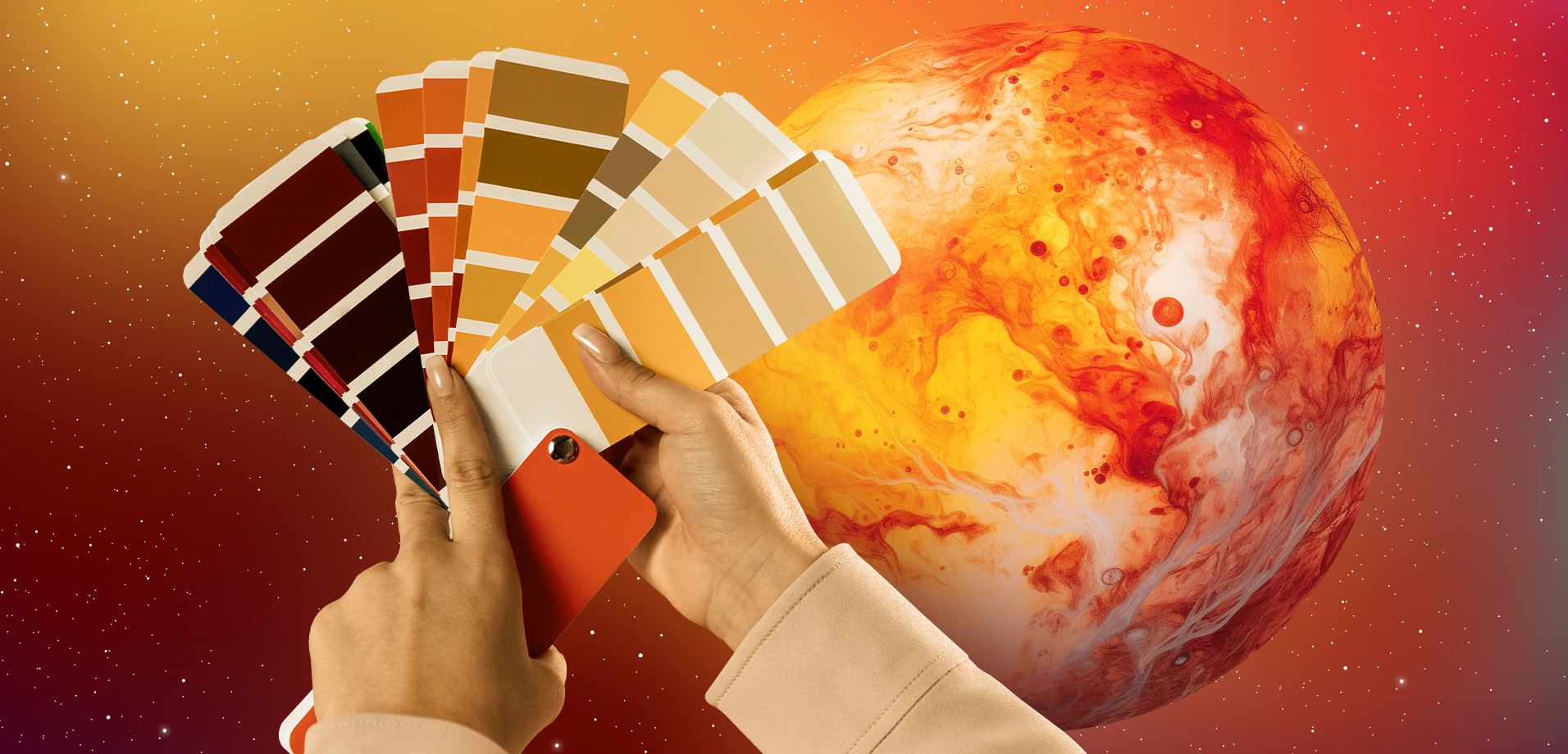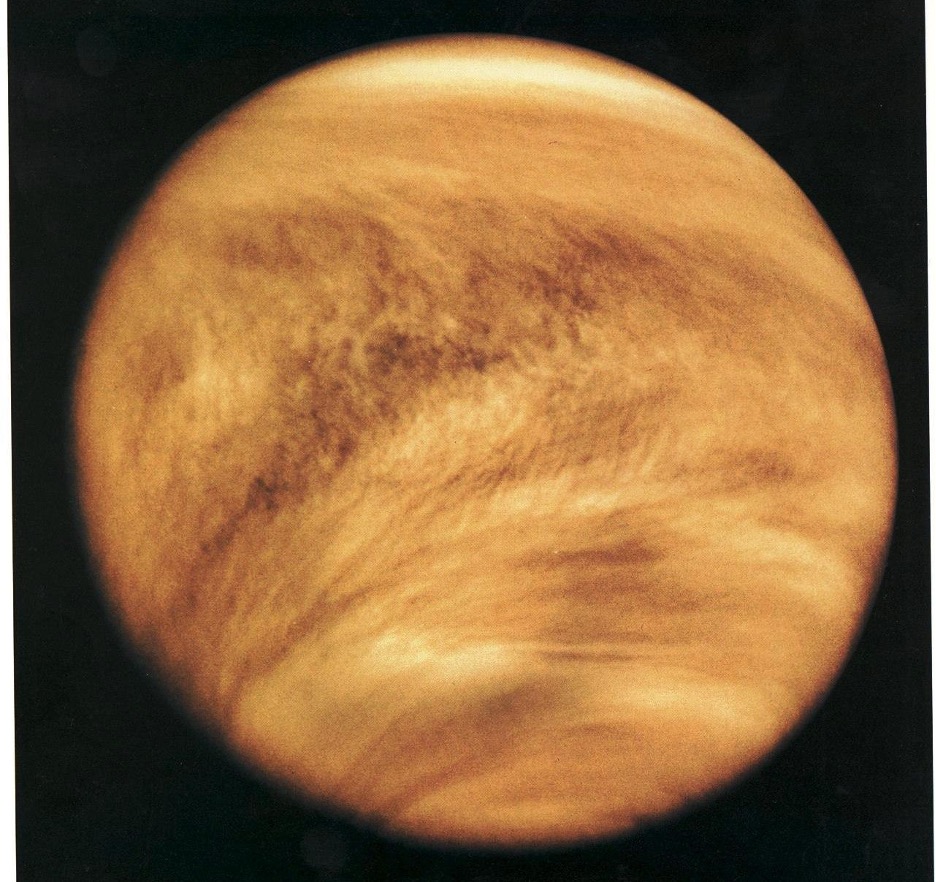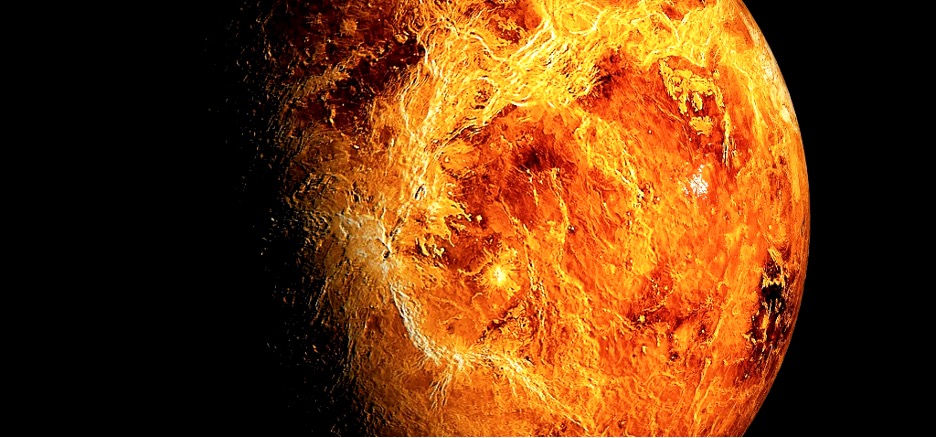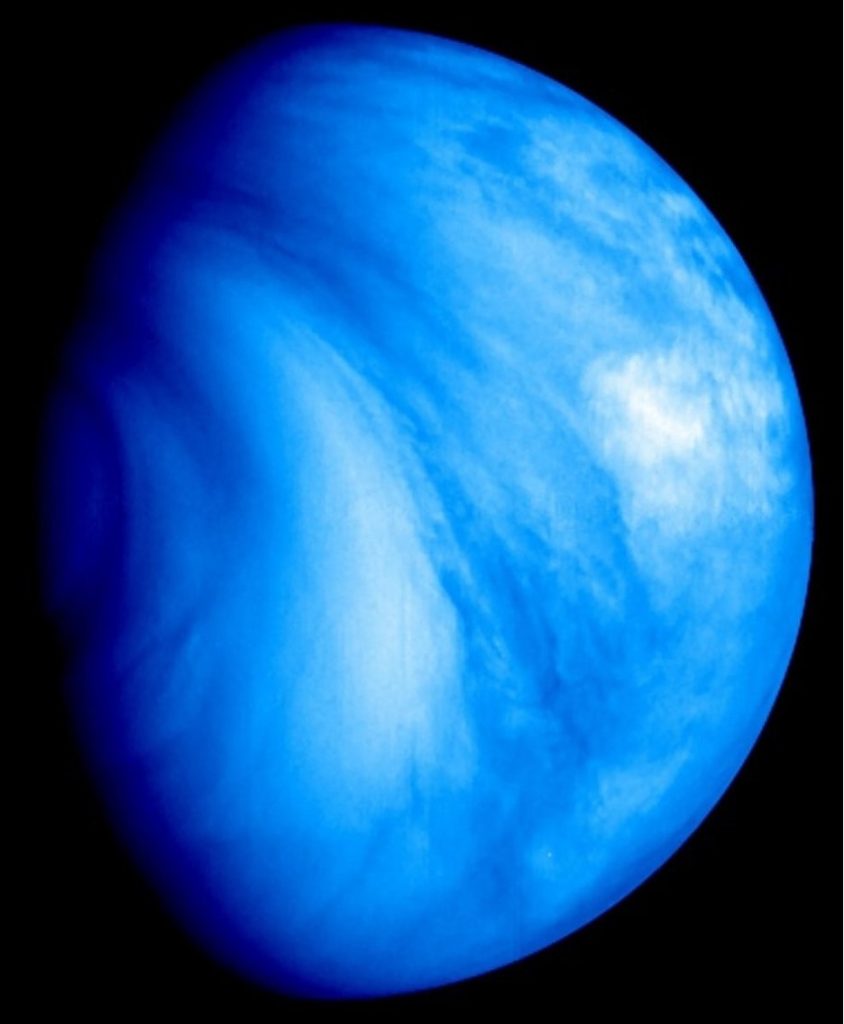The Many-faced Beauty: What Colour is Venus
17th Sep 2023
We’re talking about one of the most studied planets in our neighbourhood. We know, how far is Venus from Earth, and why Venus is the hottest planet, but some questions about her are still open to us. For instance, what colour is Venus?
There may be several answers, and each may be correct. But how to explain this? It all depends on from where and how to look at this many-faced beauty.
This article will answer what colour of the planet we see from Earth in space probe images, and what Venus’s real colour is.
What colour is Venus as seen from Earth?

In Earth’s sky, Venus is the third brightest object, after the Sun and Moon. Occasionally, it is even visible to the naked eye during daylight hours. So what colour is Venus in the sky? Perhaps, the one we can catch by looking at the planet through binoculars or a telescope. We will see a fairly bright disk with a whitish-yellow, marbled, sometimes brown tint.
But why then do we see the planet blue, white, and even red in the photos? Let’s find out.
Why is Venus different colours?
The atmosphere of the planet is opaque, and with our own eyes, we can observe only the sunlight reflected from its upper layers. But for a deeper study of the planet’s atmospheric structure and the processes occurring in it, scientists use filters at different wavelengths, since this is the only way to see some atmospheric formations. However, most images are artificially enhanced with gradient colouring, which makes it easier to identify the details.
That is why, in the pictures taken by various probes, the colour associated with Venus can acquire completely unexpected shades.
Why is Venus red?

The planet may appear red if photographed using infrared filters or under certain viewing conditions.
For example, when the planet is low on the Earth’s horizon, its light passes through denser layers of the atmosphere, which can scatter shorter wavelengths of light (blues and greens), leaving longer wavelengths (reds and oranges) more visible. In photographs or when viewed visually, this can give the impression that the planet’s colour is red or orange.
Also, when Venus passes over the edge of the Sun’s disk during transits, it may have a red colour due to the Earth’s atmosphere, which scatters the light of the Sun’s rays and enhances the red tones.
Why is Venus blue in colour?

Blue Venus is definitely something you didn’t expect to see, but this view was made possible by shooting at ultraviolet wavelengths and post-processing. A series of images taken from a distance of 35,000 km by the Venus Express by ESA in 2007 showed how high-altitude smoky clouds became brighter and dimmer over several days. Of course, this is not Venus’s real colour, but it was this colour correction that helped scientists track this atmospheric effect.
What colour is the sky on Venus
It is believed that Venus’s sky has a golden yellow colour. This is due to the dense atmosphere, consisting mainly of carbon dioxide with clouds of sulphuric acid. Clouds in the atmosphere reflect and scatter sunlight, creating a yellowish colour in the sky when viewed from the planet’s surface.
But in general, it is difficult to determine the true colour of Venus’s sky. An excess of sulphur in the atmosphere makes it yellow but with slight deviations towards green. After flares on the Sun, faint carrot-coloured stripes are observed in the planet’s atmosphere. When the planet’s magnetosphere is calm, it simply looks yellowish.
Many pictures of this planet were taken by the Venera probes in the 1970s and 80s. Have a look at what the surface reconstruction looks like in the Venera 13 image. Here, the sky colour appears to be a rich yellow, but the image was deliberately lightened to show more surface details. In reality, the sky had a distinct orange colour.

What colour is the surface of Venus
The main colour of Venus’s surface is brownish red. So, unlike our Earth, it cannot be called a “blue planet”. In search of possible places for human habitation, scientists have discovered that Venus is lifeless. Once, there might have been oceans, but a very long time ago, for some reason, the planet got very hot, and all the moisture evaporated. Today, its surface is a hot desert of slab-like rocks covered with brown and reddish rocks and dust, mostly of volcanic origin.
But it is almost impossible to see this landscape from above because of the thick clouds. Most of the sunlight cannot pass through them, so sunlight is barely reflected from its surface.
Final thoughts
So, there is no exact answer to the question of what colour is Venus. It can be marble, yellow, greenish, orange, red, and even unnaturally blue. In fact, the “variability” of Venus’s colours is one of this planet’s distinctive character traits.






Thank you for your comment! It will be visible on the site after moderation.